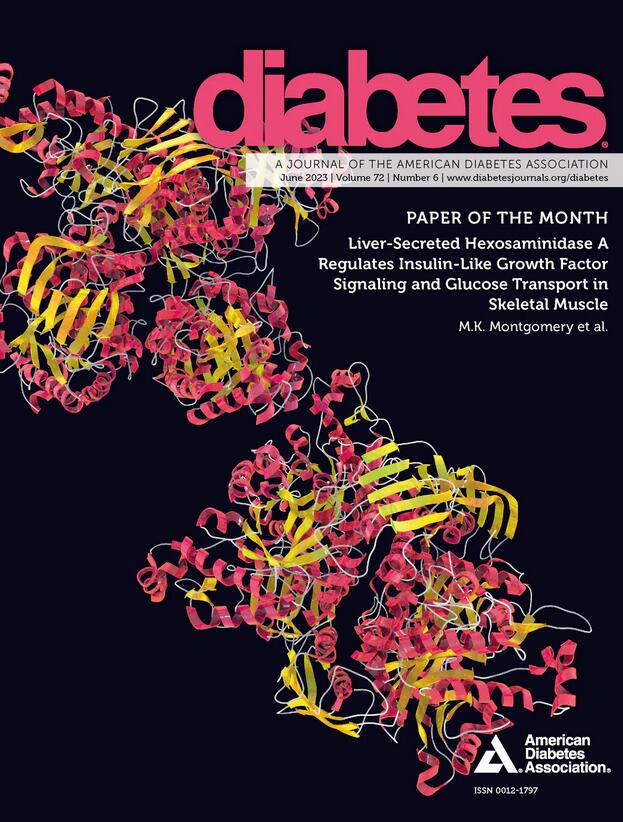Soluble HLA class I is released from human β-cells following exposure to interferons
IF 6.2
1区 医学
Q1 ENDOCRINOLOGY & METABOLISM
引用次数: 0
Abstract
HLA class I (HLA-I) molecules present intracellular antigenic peptides to CD8+ T lymphocytes during immune surveillance. In donors with type 1 diabetes, hyperexpression of HLA-I occurs in islets with residual insulin-producing β-cells as a hallmark of the disease. HLA-I hyperexpression is frequently detected beyond the islet boundary, forming a ‘halo’. We hypothesized that this halo may reflect the diffusion of soluble forms of HLA-I (sHLA-I) from the islets to the surrounding pancreatic parenchyma. To verify this, we assessed the expression of total, cell surface and sHLA-I in β-cell lines and isolated human islets, following treatment with interferons (IFN)-α and IFN-γ. Consistent with the expression patterns of HLA-I in situ, both β-cell lines and cultured human islets dramatically upregulated total and surface HLA-I when exposed to IFNs. Concomitantly, sHLA-I release was significantly increased. HLA-I released within extracellular vesicles and cleaved forms of HLA-I did not significantly contribute to the sHLA-I pool. Rather, IFNs upregulated mRNA splice variants lacking the transmembrane domain. Our findings suggest that β-cells respond to IFNs by upregulating cellassociated and soluble forms of HLA-I. Soluble HLA-I may play a role in modulating islet inflammation during the autoimmune attack.求助全文
约1分钟内获得全文
求助全文
来源期刊

Diabetes
医学-内分泌学与代谢
CiteScore
12.50
自引率
2.60%
发文量
1968
审稿时长
1 months
期刊介绍:
Diabetes is a scientific journal that publishes original research exploring the physiological and pathophysiological aspects of diabetes mellitus. We encourage submissions of manuscripts pertaining to laboratory, animal, or human research, covering a wide range of topics. Our primary focus is on investigative reports investigating various aspects such as the development and progression of diabetes, along with its associated complications. We also welcome studies delving into normal and pathological pancreatic islet function and intermediary metabolism, as well as exploring the mechanisms of drug and hormone action from a pharmacological perspective. Additionally, we encourage submissions that delve into the biochemical and molecular aspects of both normal and abnormal biological processes.
However, it is important to note that we do not publish studies relating to diabetes education or the application of accepted therapeutic and diagnostic approaches to patients with diabetes mellitus. Our aim is to provide a platform for research that contributes to advancing our understanding of the underlying mechanisms and processes of diabetes.
 求助内容:
求助内容: 应助结果提醒方式:
应助结果提醒方式:


